Guide To Buying A Leg Press Machine
The leg press machine is an apparatus that lets you perform a compound weight training exercise wherein you use your legs to push the weight away from yourself. It targets the muscles in your quads, glutes, hamstrings, and calves. It is essentially a squat without upper body involvement.
Product Comparison Table
What To Look for
19/02/2021
Vertical vs. Horizontal vs. 45 degree
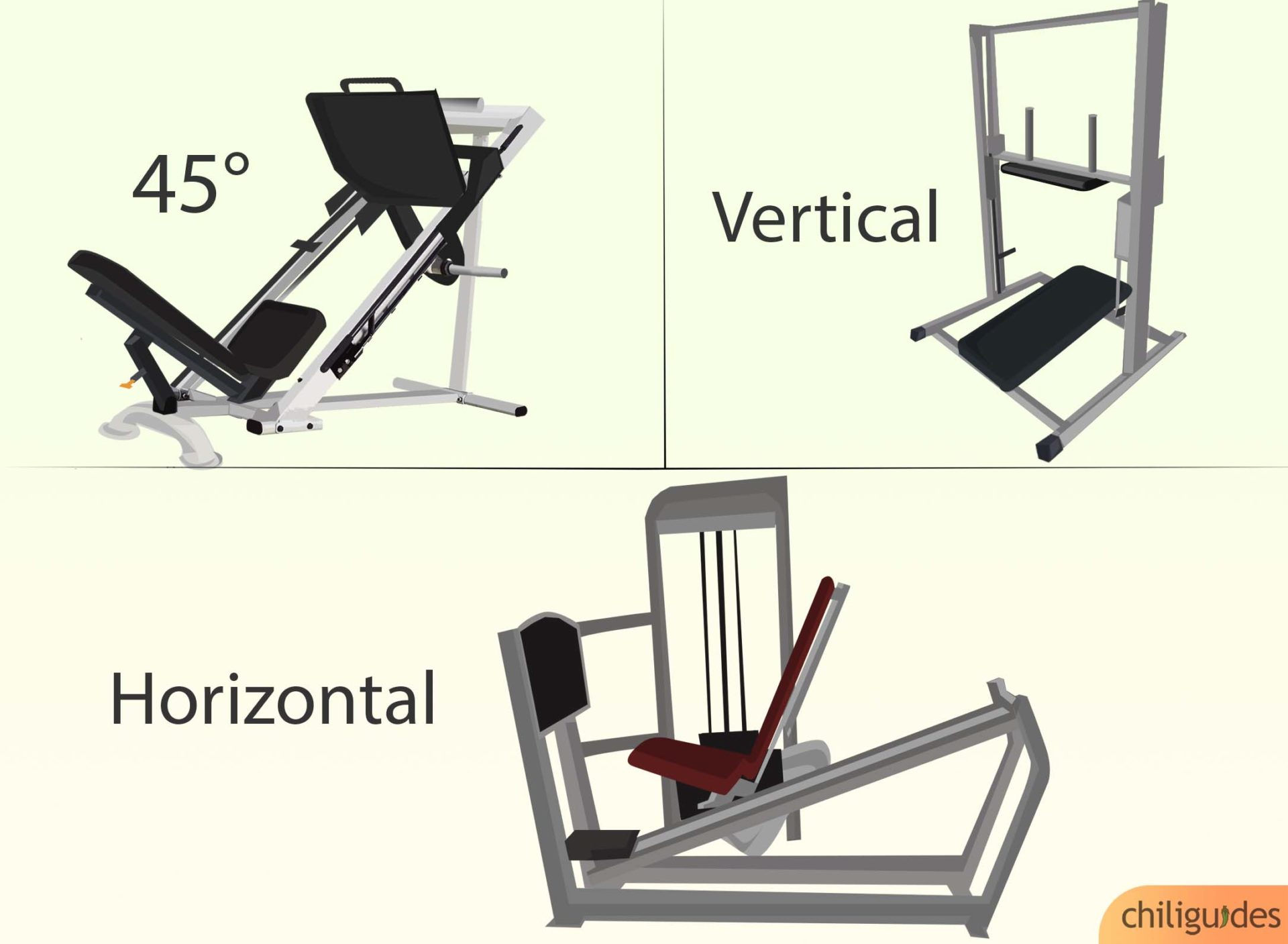


- Vertical leg press machines are the most compact of all the options available. The weight hangs directly above your hips as you lie parallel to the floor on a padded surface and push your legs straight up, vertically, which works your glutes and hamstrings a bit more than other leg presses. It is a safe and economical option if you are on a budget but requires a significant amount of flexibility in your glutes and hamstrings.
- A Horizontal Leg Press requires you to sit at a 90° angle and push the platform outwards. These are good for beginners as they are less challenging on the joints but do not prove to be of much use for anyone else.
- 45-Degree Leg Press machines require you to sit back and push the platform at a 45-degree angle. They allow you to load a lot of weight and they are effective for people at every level.
Consider your budget and space.



- The higher the weight rating on the machine, the more expensive it will be. If you are a commercial gym owner, you need a leg press with a high weight rating to avoid putting your members at risk of injury.
- If you’re buying a leg press for your home gym, it will cost you about $1,000 for a high-quality one, whereas a commercial leg press will usually cost around $3,000 since it has a higher weight rating and is more durable.
- Measure the space you have carved out for the leg press machine. Compare that space with the machine’s dimensions because a leg press tends to have a very large footprint.
Don’t buy anything plastic.
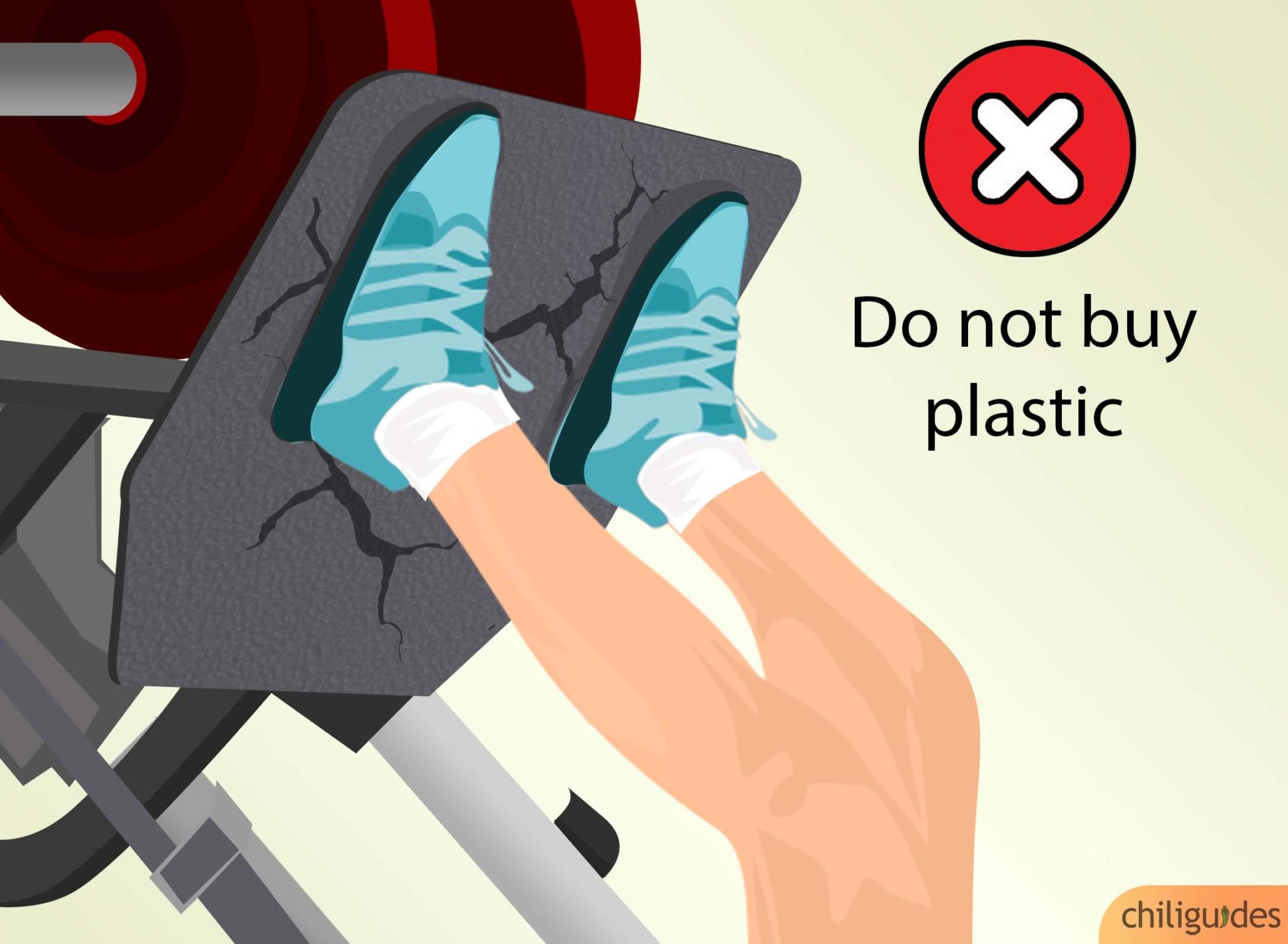


- Look for frames with ten gauge steel that is at least 2″ wide and a polished frame for added durability.
- In the interest of durability, go for bearings made of steel, brass, or any other material than plastic. Steel bearings provide a smoother movement for the footpad over brass or plastic.
- Furthermore, avoid machines with any plastic components as they will crack and break sooner rather than later.
Make sure you can rest your head on the back pad.
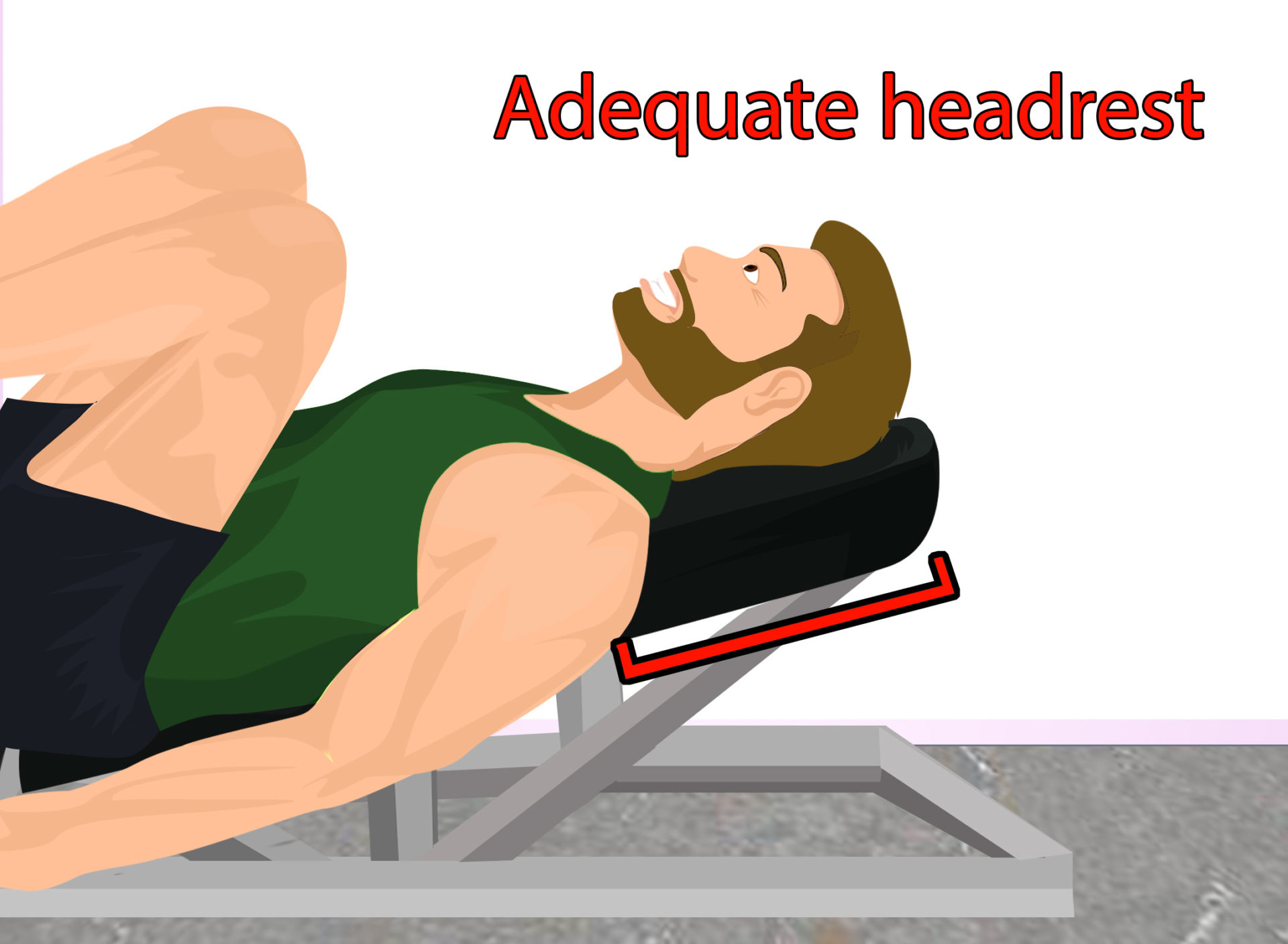


- Go for polyurethane pads as they are resistant to sweat, which further helps avoid wear and tear of the machine and aids against infections.
- The only support your back and head get is from the padded surfaces, so it is necessary to make sure the seat is long enough for you to rest your head.
Top Picks



Best 45° Leg Press Machine
POWERTEC Leg Press
For $1,299.00
- Double-stitched thick padding
- Compact design
- Adjustable back
- 1,000 weight rating
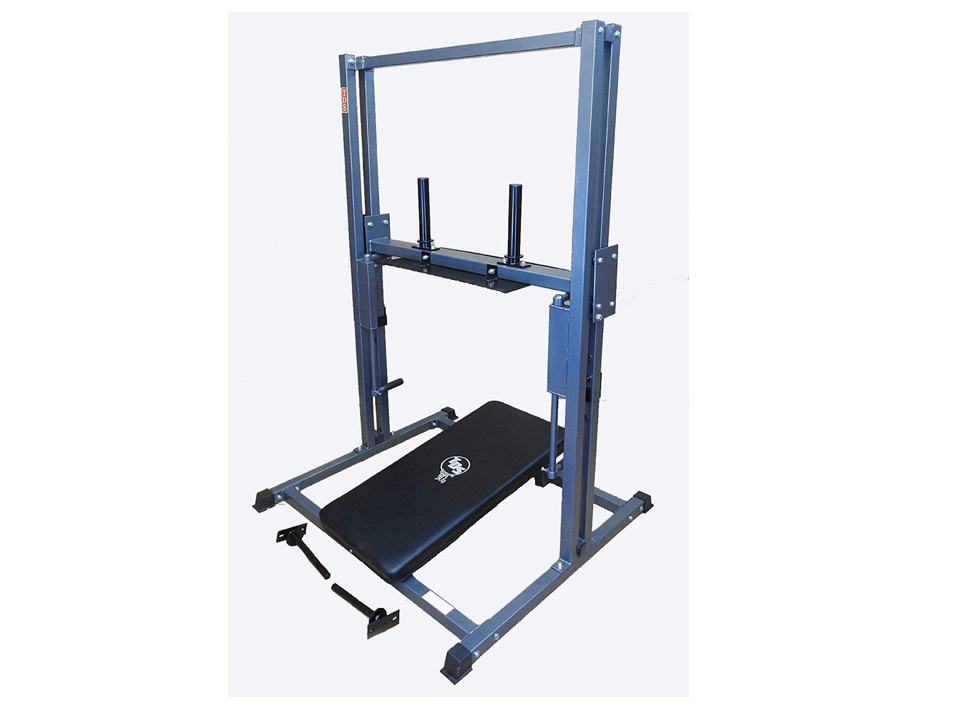


Best Vertical Leg Press
TDS Premier Vertical Leg Press
For $779.95
- Can take standard and Olympic weight plates
- Heavy-duty stoppers
- Easy to set-up and use
- Noisy
- No neck rest
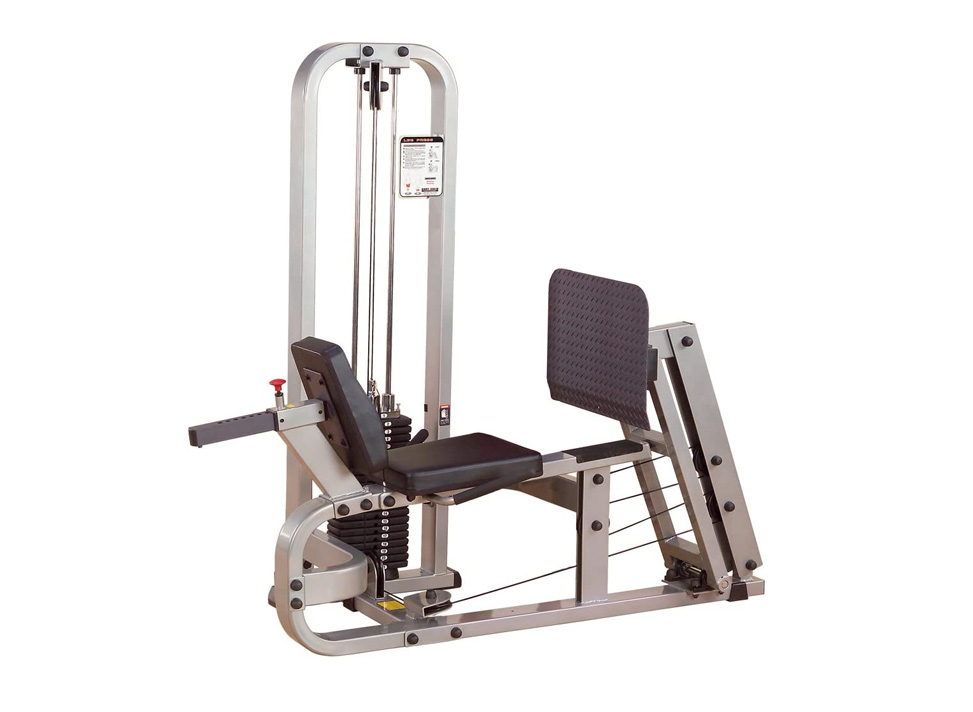


Best Horizontal Leg Press
Body-Solid ProClubLine Leg Press Machine + Weight Stack
For $2,336.00
- Adjustable back
- Extra-wide footplate
- Double-stitched padding
- 210lb weight stack included
- Not challenging enough for intermediate athletes
Common Questions
Q:Do I need a leg press machine?
- If you are a beginner you can benefit more from squats than leg presses, as squats help build up lower body strength and condition the back, knees, and core, at the same time.
- If you are an intermediate lifter, powerlifter or a professional athlete, you can go for a leg press machine.
- Leg presses are great at developing lower body hypertrophy, without putting too much strain on the lower back.
- You can also use them to supplement compound movements by incorporating them as supersets.
- Also, if you are recuperating from back injuries, you can use leg presses to safely build your way up to heavier lifts.
Q:What muscles does a leg press work?
A leg press works the quadriceps, hamstrings, glutes, and calves.The main emphasis is on the quads.However, you can modify your foot position and width to target other muscle groups like the calves and the abductors.
Q:Is there a leg press alternative?
- The only worthy alternative to a leg press is a squat. Squats hit all the muscles targeted by a leg press and also keep the back and core engaged. If you are looking to hit multiple muscle groups, then you should go for compound exercises like squats and weighted lunges.
- If you find it difficult to do squats, you can try weighted walking lunges, hip thrusts, dumbbell or barbell step-ups, and Bulgarian split squats.
- If you want to target specific muscles then you can use isolation exercises like hip thrusts, to target glutes and step-ups/ Bulgarian squats to target quads.
Q:What is the correct leg press foot placement?
- The correct foot placement for a leg press would be, feet in the middle of the platform, shoulder-width apart.
- Your back should be straight and aligned with the support. While pressing, your back and hips should stay firmly on the seat.
- If you feel pain in the lower back or knees, try aligning the recline of the seat and foot width.
- Although this is the correct position for a leg press, you can change your feet placement and width to target specific muscles better.
Q:What is the difference between a leg press and a squat?
- A squat is a major compound exercise, whereas a leg press is an isolation exercise, mostly targeting the quads.
- Both the exercises hit the quads, hamstrings, and glutes but the squats also engage your back and core.Each exercise comes with its own set of pros and cons.
- There are a variety of different squats which can help hit the quads from different angles. However, they can be susceptible to causing back and knee injuries if not performed properly.
- On the other hand, a leg press keeps your back supported, hence minimizing risk. Since they have a shorter range of motion, more emphasis can be put on the quads.
Q:What are some leg press variations?
You can use leg presses with a variety of feet positions and widths that hit different muscles.
- The regular position is to place the feet in the middle of the platform, shoulder-width apart. This position hits the quads, hams, and glutes.
- If you place your feet higher on the platform with the same width, you can target your glutes and hamstrings more than your quads.
- Keeping the feet at the same width and lower on the platform, helps emphasize quads and the calves.
- If you place your feet in the middle of the platform, 1.5x shoulder-width apart, you can target your abductors (inner thighs) much better.
Q:How can I perform leg press at home?
You can get the benefits of a leg press at home with or without any gym equipment.
- You can start with basic squats, broad jumps, and lunges. With time you should progress on to jump squats, wall sits, and hip thrusts. If you have a pair of dumbbells, you can add weight to any of these exercises to make them more challenging.
- You can also try the Bulgarian split squat, weighted step-ups, and goblet squats.
- If you have resistance bands available, you can try resistance band leg presses and side-lying leg presses as well.
- All of these exercises essentially hit all the same muscle groups as a leg press (quads, hams, and glutes) and you can perform them at home with minimal or no equipment.
Q:Who should perform a leg press?
- If you are suffering from bad knees or a lower back injury, you should prefer a leg press over squats.
- If you are a powerlifter or strongman, you can use leg presses if you want to increase your workout volume without putting too much strain on your spine and central nervous system.
- You can also use leg presses as a superset to supplement your squats.
- If you are a CrossFit athlete or sportsman, you can use leg presses when you are focusing on your lower body volume.
It is worth mentioning if you have weak knees, you should use the stairmaster as your cardio machine of choice to help iron out muscle imbalances in your legs.

